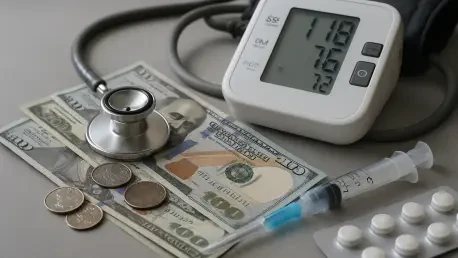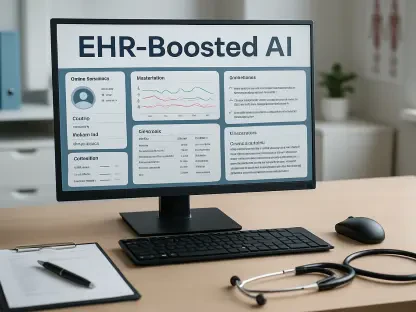The medical technology industry, often a cornerstone of innovation and patient care, finds itself grappling with a renewed specter of uncertainty as a Section 232 investigation, initiated by the Department of Commerce, casts a shadow over the importation of critical medical equipment. Announced on September 2, this probe seeks to evaluate national security risks tied to a broad array of products, ranging from syringes and IV bags to advanced devices like insulin pumps and imaging machines. With the potential for tariffs looming—reminiscent of past actions on steel and pharmaceuticals—stakeholders are on edge, questioning how such measures might ripple through supply chains and ultimately impact healthcare delivery. This investigation has reignited debates about balancing national security with economic stability in a sector vital to millions of Americans.
Economic Implications for the Medtech Sector
Supply Chain Vulnerabilities and Cost Concerns
The medtech industry, while robust with approximately 70% of equipment used in the U.S. being domestically produced, still relies heavily on global supply chains for raw materials and components. Industry advocates, such as AdvaMed, have emphasized that imposing tariffs could significantly drive up costs for manufacturers, a burden that might inevitably be passed on to hospitals and patients. Such increases could limit access to essential, lifesaving technologies at a time when affordability is already a pressing concern. The fear is that tariffs, potentially as high as 250% as hinted at in other sectors, could disrupt the delicate balance of cost and innovation, forcing companies to rethink sourcing strategies under tight timelines. This vulnerability highlights a critical tension between fostering domestic production and maintaining the affordability of medical advancements that millions depend on daily.
Industry Responses and Financial Preparedness
As the Section 232 investigation unfolds, major medtech firms are navigating a landscape of uncertainty with cautious strategies. While some companies have already factored potential tariff impacts into their financial forecasts, as noted by analysts at William Blair, the unpredictability of the probe’s outcome keeps profit margins under pressure. Responses from industry giants remain measured, with firms like Philips indicating that it’s too early to predict operational or financial fallout given the limited scope of current details. Meanwhile, advocacy for tariff exemptions continues to gain traction, with groups arguing that reduced trade barriers could bolster U.S. manufacturing and job growth over time. This preparatory stance reflects a sector bracing for change, yet hopeful that strategic lobbying and existing trade agreements might mitigate the harshest effects of any forthcoming policies on their bottom lines.
Strategic Outlook and Future Considerations
Analyst Predictions and Potential Outcomes
Analysts are closely monitoring the trajectory of the Section 232 probe, offering a spectrum of predictions that range from cautious optimism to concern. Experts like Needham’s Mike Matson anticipate that tariffs, if imposed, might roll out gradually, similar to previous approaches in pharmaceuticals, allowing medtech firms some leeway to adjust. However, the immediate tactic for many could involve passing added costs to consumers, a move that might strain healthcare budgets. In the long term, a shift toward increased domestic manufacturing appears plausible, though such transitions demand significant time and investment. These insights suggest a complex road ahead, where short-term financial adjustments might clash with broader goals of enhancing U.S.-based production to secure supply chains against future disruptions or geopolitical tensions.
Timeline and Advocacy Efforts Moving Forward
With the Department of Commerce report on the Section 232 investigation due within 270 days and public comments open for a brief 21-day window, the timeline for potential tariff impositions points to actions unlikely before mid-2026. This extended period offers medtech companies a critical window to refine strategies and strengthen advocacy for exemptions. Industry groups are ramping up efforts to highlight how tariff relief could benefit American patients through better access to affordable technologies. Meanwhile, bipartisan support and trade agreements with key partners like the European Union and Japan may serve as buffers against severe measures, as suggested by J.P. Morgan analysts. Reflecting on past challenges, the sector demonstrated resilience by adapting to uncertainties during earnings discussions, setting a precedent for proactive engagement with policymakers to shape outcomes that prioritize both security and economic health.









